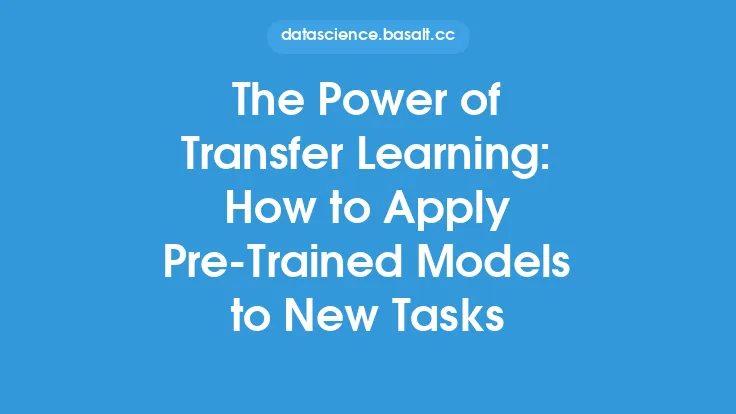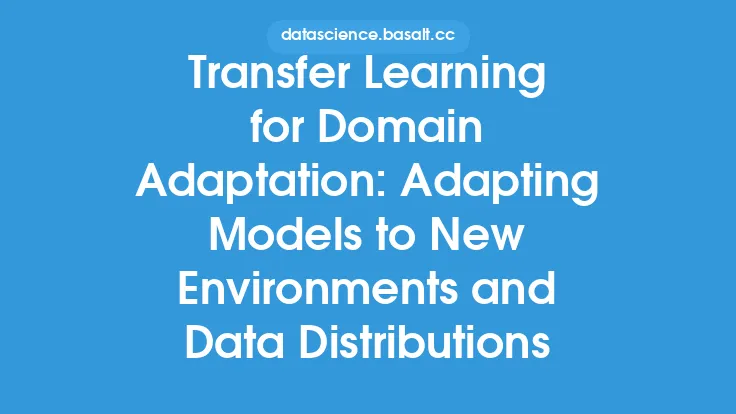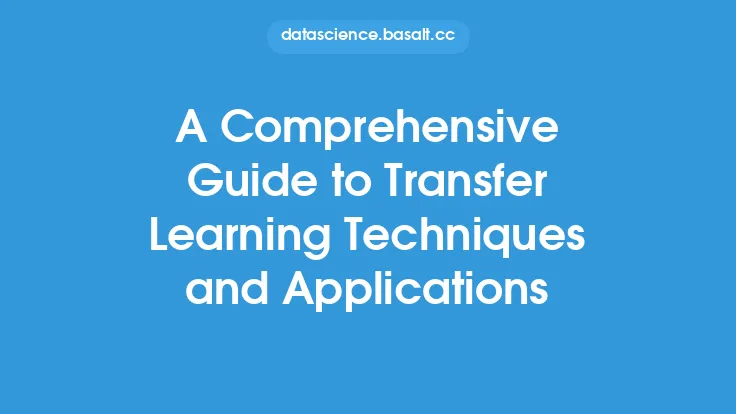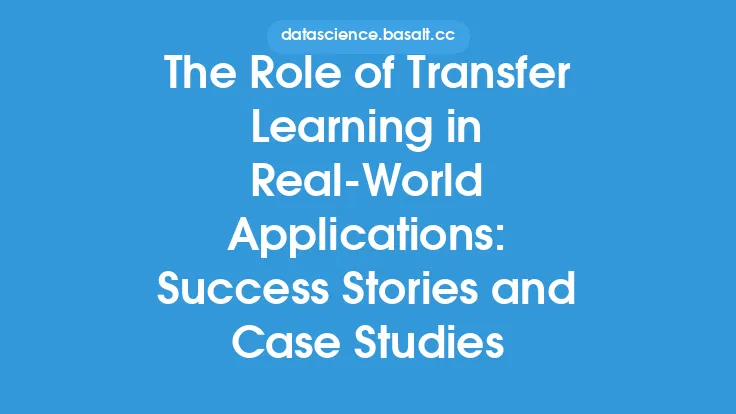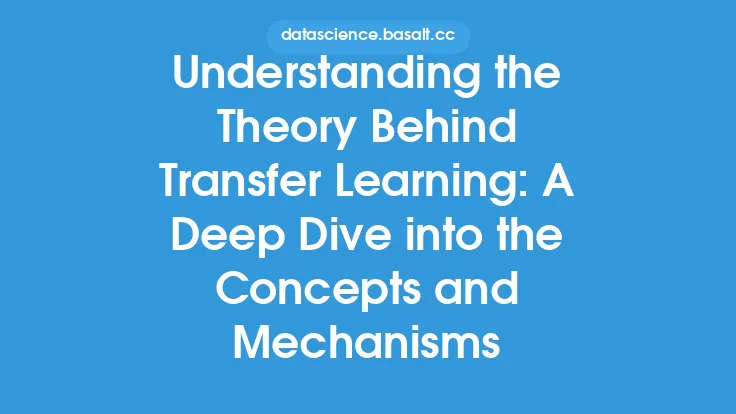Machine learning has become a crucial aspect of modern technology, with applications in various fields such as computer vision, natural language processing, and speech recognition. One of the key challenges in machine learning is the requirement of large amounts of labeled data to train accurate models. However, collecting and labeling data can be a time-consuming and expensive process. This is where transfer learning comes into play, allowing developers to leverage pre-trained models as a starting point for their own tasks, thereby reducing the need for large amounts of training data.
What is Transfer Learning?
Transfer learning is a machine learning technique where a model trained on one task is re-purposed or fine-tuned for another related task. The pre-trained model has already learned to recognize certain features and patterns from the original task, which can be useful for the new task. This approach has gained popularity in recent years due to its ability to improve model performance, reduce training time, and alleviate the need for large amounts of labeled data. Transfer learning can be applied to various machine learning tasks, including image classification, object detection, sentiment analysis, and language translation.
Types of Transfer Learning
There are several types of transfer learning, each with its own strengths and weaknesses. The most common types include:
- Fine-tuning: This involves taking a pre-trained model and fine-tuning its weights on the new task. Fine-tuning can be done by adding new layers on top of the pre-trained model or by modifying the existing layers.
- Feature extraction: In this approach, the pre-trained model is used as a feature extractor, and the features are then used to train a new model on the new task.
- Weight initialization: This involves using the pre-trained model's weights as initialization for the new model, and then training the new model from scratch.
- Knowledge distillation: This is a technique where a smaller model (the student) is trained to mimic the behavior of a larger pre-trained model (the teacher).
How Transfer Learning Works
Transfer learning works by leveraging the features and patterns learned by the pre-trained model on the original task. The pre-trained model has already learned to recognize certain features, such as edges, textures, and shapes, which can be useful for the new task. When the pre-trained model is fine-tuned on the new task, it can adapt its weights to recognize the new features and patterns. This process can be thought of as a form of "knowledge transfer," where the pre-trained model transfers its knowledge to the new model.
Benefits of Transfer Learning
Transfer learning has several benefits, including:
- Improved model performance: Transfer learning can improve model performance by leveraging the features and patterns learned by the pre-trained model.
- Reduced training time: Transfer learning can reduce training time by using the pre-trained model as a starting point, rather than training a model from scratch.
- Less labeled data required: Transfer learning can alleviate the need for large amounts of labeled data, as the pre-trained model has already learned to recognize certain features and patterns.
- Faster deployment: Transfer learning can enable faster deployment of machine learning models, as the pre-trained model can be fine-tuned and deployed quickly.
Applications of Transfer Learning
Transfer learning has a wide range of applications, including:
- Computer vision: Transfer learning can be used for image classification, object detection, segmentation, and generation tasks.
- Natural language processing: Transfer learning can be used for language translation, sentiment analysis, text classification, and language modeling tasks.
- Speech recognition: Transfer learning can be used for speech recognition, speech synthesis, and voice recognition tasks.
- Medical imaging: Transfer learning can be used for medical image analysis, disease diagnosis, and patient outcome prediction tasks.
Popular Pre-Trained Models
There are several popular pre-trained models that can be used for transfer learning, including:
- VGG16: A convolutional neural network (CNN) model pre-trained on the ImageNet dataset.
- ResNet50: A CNN model pre-trained on the ImageNet dataset.
- InceptionV3: A CNN model pre-trained on the ImageNet dataset.
- BERT: A language model pre-trained on the Wikipedia and BookCorpus datasets.
- RoBERTa: A language model pre-trained on the Wikipedia, BookCorpus, and Common Crawl datasets.
Challenges and Limitations
While transfer learning has many benefits, it also has some challenges and limitations, including:
- Domain shift: The pre-trained model may not perform well on the new task if the data distribution is significantly different.
- Overfitting: The pre-trained model may overfit to the new task if the training data is limited.
- Catastrophic forgetting: The pre-trained model may forget its original knowledge when fine-tuned on the new task.
- Computational resources: Transfer learning can require significant computational resources, especially when fine-tuning large pre-trained models.
Best Practices
To get the most out of transfer learning, it's essential to follow best practices, including:
- Choose the right pre-trained model: Select a pre-trained model that is relevant to the new task and has a similar data distribution.
- Fine-tune the model: Fine-tune the pre-trained model on the new task to adapt its weights to the new features and patterns.
- Use regularization techniques: Use regularization techniques, such as dropout and weight decay, to prevent overfitting.
- Monitor performance: Monitor the model's performance on the new task and adjust the hyperparameters as needed.
Conclusion
Transfer learning is a powerful machine learning technique that can improve model performance, reduce training time, and alleviate the need for large amounts of labeled data. By leveraging pre-trained models, developers can adapt their models to new tasks and domains, enabling faster deployment and improved accuracy. While transfer learning has its challenges and limitations, following best practices and choosing the right pre-trained model can help overcome these limitations and achieve state-of-the-art results. As machine learning continues to evolve, transfer learning is likely to play an increasingly important role in enabling the development of more accurate and efficient models.
